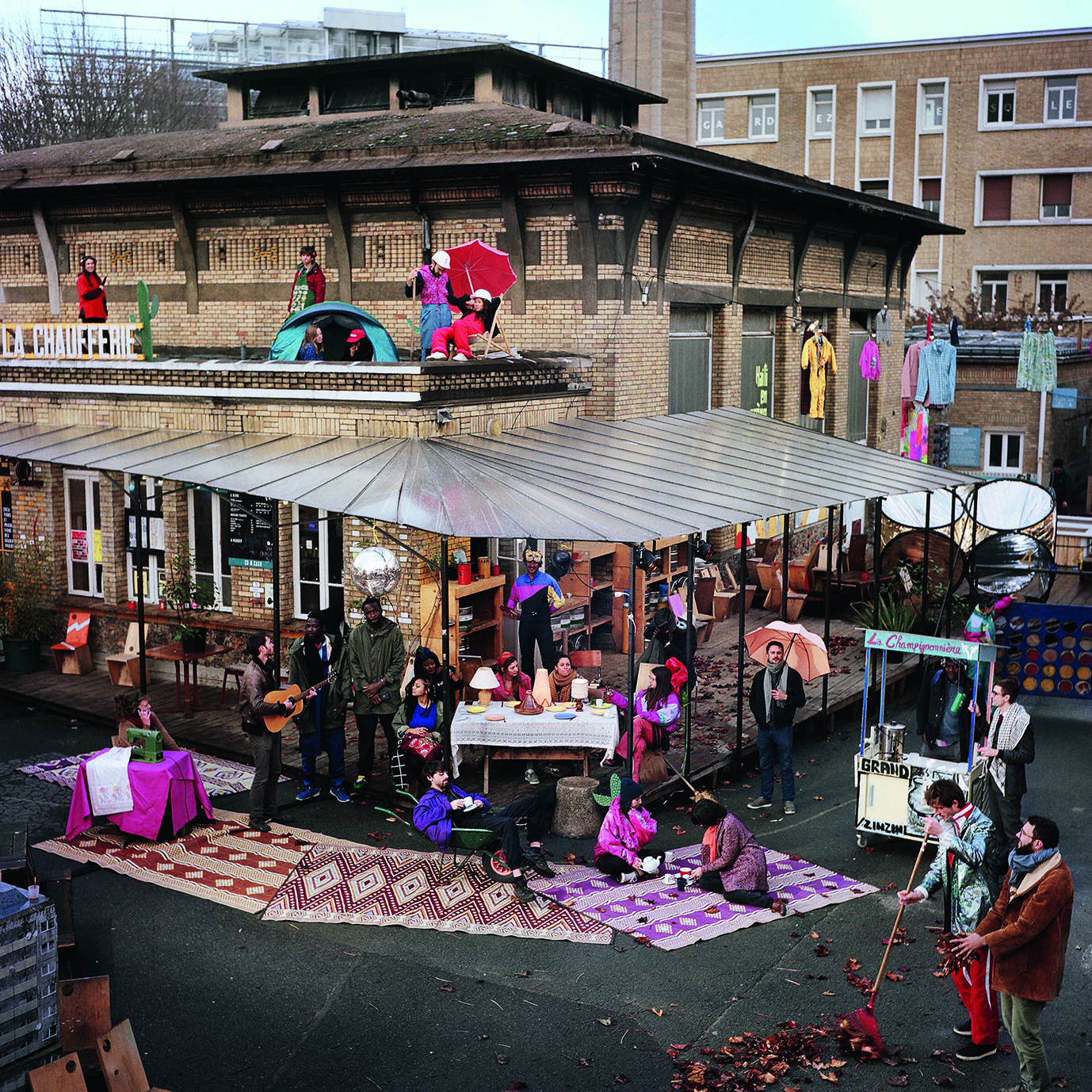France’s pavilion at the upcoming Venice Architecture Biennale is being curated by Encore Heureux, founded in 2001 by Julien Choppin and Nicola Delon, joined by Sébastien Eymard in 2016. Their theme of “Lieux Infinis. Construire des Bâtiments ou des lieu?” (Infinite Spaces. Constructing buildings or places) presents ten experimental case studies of social and cultural regeneration of ten disused sites in France. We have interviewed the three curators.
“Infinite Spaces” is the title of the French Pavilion at the Venice Biennale 2018. What is your idea?
We chose the title “Infinite Spaces” because we aim to highlight the architectural processes that generate unexpected places. Places where a large variety of functions can take place such as cultural activity, shared and emergency housing, artistic residency, associational activity… Integrated unexpected uses, zones of free access or citizen awareness are proof that some spaces are rich with social experimentation.
The subtitle is “Constructing buildings or places”: we want to explore what really counts in architecture and in the cities of today and tomorrow. “Infinite Spaces” is on one hand the infinity of alternatives arising in France and in the world and on the other hand the “non-finite” that makes architecture alive because people can transform it over time.
Which case studies in France have you selected?
We will present 10 study cases for this exhibition: Grands Voisins and Centquatre (Paris), Hôtel Pasteur (Rennes), Grande Halle (Colombelles), Ateliers Médicis (Clichy-sous-Bois-Montfermeil), Friche la Belle de Mai (Marseille), Tri Postal (Avignon), 6B (Saint-Denis), Convention (Auch), Ferme du Bonheur (Nanterre).
The reason we chose these 10 is that they combine the notions of public, private, association, wide, reduced, old, future, fragile, urban, peripheral and rural. Each of them will be presented using a variety of devices (objects, models, photos, videos, drawings…) that will tell their story and try to convey their soul.
Yvonne Farrell and Shelley McNamara have said that “Freespace describes a generosity of spirit and a sense of humanity at the core of architecture’s agenda, focusing on the quality of space itself”. These words are generic, we all agree and then?
Behind this words we ask: what are the real spaces of freedom today? What alternatives are emerging? The two main issues of our time are the climate crisis and the need for solidarity. The 10 places we present are on this track, they take risks and invent new processes and specific strategies. They use different economic models, they involve the citizen in the creative process of his own city, they offer spaces of free expression, and they are committed to a more responsible model of production and consumption. We are convinced that these places are real constructive alternatives that must be shared and debated.
The translation of Encore Heureux is Still happy… Is architecture still happy now?
In an ever more complex world, answers cannot be simple. Architects are part of this complexity. It’s often very hard to deal with this, especially if we want to keep in mind that our collective quest is the quest for happiness… We always try on our small scale to make sense in all our work: a social, environmental, programmatic, and aesthetic sense. These qualities are not always easy to achieve, and we are constantly reviewing our way of working.
How can architecture achieve happiness? There are many players who contribute to the success of a project …
We strongly believe in the necessity of thinking globally, in a way that includes both people and situations, rather than just our world of experts and specialists. Each question asked, each situation, each story is by definition unique and so requires a singular answer. To re-question the client’s needs and desires at every step of our work has proven the sine qua non condition for a successful project. We believe new modes of construction are not only possible but also necessary: ones that are economically and ecologically sober, thus rich in meaning and imagination.
Cover photo: Les Grands Voisins, Parigi, 14e arrondissement
© Alexa Brunet
About Author
Tag
biennale venezia 2018 , Freespace , venezia
Last modified: 18 Aprile 2018


























